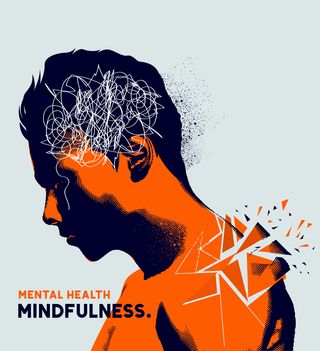Depression
National Well-Being and Rates of Depression
Our well-being and that of our neighbors is more interlinked than we realize.
Posted May 19, 2018

The recently released World Happiness Report 2018 met with the usual flurry of questions and doubts about what exactly it measured, and how accurately. There was also some hand-wringing this year that the United States had dropped to 18th in the world rankings, from last year’s 14th. Amid the discussion of life satisfaction and the various metrics used to assess it, though, much of the focus this year put well-being in the context of national rates of depression.
That emphasis should not surprise us, though oddly it still can. Researchers have long insisted on their correlation—that stress tied to financial insecurity and discrimination correlates closely with depression, for example, while income inequality, another key variable, “is associated with the population prevalence of depression” in findings that are replicated across the developed and developing world.
This year, Finland compelled greater reflection on the relationship between depression and happiness, because the country placed first among indices measuring well-being (including social stability and services; gross domestic product per capita; trust in government and institutions; levels of crime and corruption, and so on) while also ranking second, according to the World Health Organization, in per capita prevalence rates for depressive disorders. Here it follows the United States (ranked significantly lower for happiness, as we might expect), yet Finland’s outsize score for happiness and depression suggests a high prevalence of both, and for several reasons.
To its citizens, happiness may mean more than simply the absence of depression. The forms of comparison that social media intensify may be a further complicating factor, especially if online platforms are used to exaggerate happiness, through ostentatious displays of it (as various commentators point out, Finns are not exactly known for the latter).
“While there are significant shortcomings in international comparisons of depression and while other research has estimated that the depression rates of Finland would be closer to the global average,” Frank Martela commented in Scientific American, “what is clear is that Finland is far from the top of the world in preventing depression.”
That treating and combating depression are thought a national responsibility—a matter of public health, social well-being, and government policy—may be striking to American ears. We tend to view the disorder and its treatment in more individualized terms, with responsibility falling largely on the sufferer and a small circle of caregivers.
But just as there are competing perspectives on what causes depression, with emphasis including and surpassing the brain, so are there different ways to define happiness. As Martela adds, “depending on which one we choose, we get completely different countries at the top of the rankings.” If positive emotion is prized above all else, then, following Gallup data, Latin American countries such as Paraguay, Guatemala, and Costa Rica fill the top rankings and Finland drops significantly. If purpose or meaning in life is felt to be paramount, then Togo and Senegal predominate and Finland and the U.S. lag far behind.
Although a crucial relationship between happiness and rates of depression exists, then, it is complex and culturally inflected. Still, it is worth pursuing, in pointing to patterns and dynamics that extend beyond the individual, to the neighborhoods we inhabit, the cultures and communities we join, the regions and nations with which we identify. As the Lebanese-born French writer Amin Maalouf argued eloquently, helping us extrapolate outward from self to nation, “A person’s identity … is like a pattern drawn on a tightly stretched parchment. Touch just one part of it, just one allegiance, and the whole person will react, the whole drum will sound.”
If happiness is seen as the absence of depression, even as somehow vanquishing the condition, then the high ranking of Finland for both elements must seem something of a surprise. If, by contrast, we associate happiness more with material factors such as wealth and affluence, we’re likely to downplay the importance of pressing but less tangible elements, from social trust and freedom from discrimination to confidence in government and public institutions. As the economist Jeffrey Sachs notes of the recent World Happiness Report, “while America’s income per capita has increased markedly during the past half century, several of the determinants of well-being have been in decline. Social support networks in the US have weakened over time; perceptions of corruption in government and business have risen over time; and confidence in public institutions has waned.”
That nationally-driven factors like income inequality correlate closely with depression remains a significant, under-recognized phenomenon. “There is a robust body of evidence linking inequality and health outcomes,” noted Harvard Medical School-based Vikram Patel and colleagues in World Psychiatry earlier this year, “ranging from infant mortality and life expectancy to obesity…. Not surprisingly, there is also evidence linking income inequality with mental health outcomes,” with depression as “one of the mental health outcomes considered in studies showing a positive association with income inequality.”
Just one consequence of this emphasis: policy decisions such as progressive taxation, universal health care, raising the minimum wage, and other measures to limit inequality have strong ties to public health and mental health, putting the onus on prevention squarely on society’s shoulders. Another consequence, especially in the U.S., where fields such as biological psychiatry not only predominate but are accorded outsize prestige and explanatory power: they are shown to minimize attention to the context in which depression occurs, tending instead to view the brain and individual in isolation, largely unaffected by matters such as economic policy and fraying social trust.
The dominance of that model is not inevitable, however, and the example of Finland underscores why it needs to be challenged. American psychiatry is also capable of a more nuanced and expanded focus, to address a range of causes for mental distress and unhappiness. In answer to the question, “Why aren’t we Americans as happy as we should be, given all the wonderful things we have in our lives?” Ronald W. Pies, former editor of Psychiatric Times, concludes on a personal note: “I think the declining state of American happiness is largely a rational response to the mess in which “we the people” find ourselves…. I [also] believe things can get better. Witness the idealism of the students who survived the Parkland High School shootings, and who now protest the unconscionable gun-related carnage in this country.”
If depression about the state of one’s country is partly a rational response to its political crises, then, just as clearly, we need to approach depression differently—as joined to social causes, not divorced from them, with treatment part of a national program that can repair the fraying social tie before it unravels any further.




